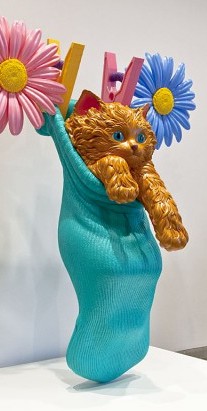
So much of art today is shallow. This is largely due to the inability of the modern secular mind to deal with pain and issues of unjust and disproportionate suffering. We all experience suffering, it is inevitable. It is an inescapable part of the human experience. For most of human history the widely accepted narratives suggested that our life, as we currently experience it, is not the end of our story.
Whether it was the possibility of spiritual enlightenment, life after death or reincarnation, every great religious tradition made sense of suffering by integrating it into a coherent meta-narrative. These narratives not only delt with suffering, but, in most cases made suffering a prerequisite for strength, growth and self-actualization. This perspective served humanity as an amazing source of resilience. Even in this modern age, the overwhelming data generated by secular researchers finds that people of faith are better equipped to deal with suffering than their non-religious counterparts.
The modern secular mind, having dispensed with these meta-narratives, insists that what exists is simply what we can see, touch, measure and explain in some empirical manner. So, how do you explain the purpose of suffering empirically? Of course, some of our suffering is self-inflicted — caused by ignorance or bad decisions — but what do you say to innocent victims of slavery, the Holocaust, a natural disaster or, more recently, the suffering children in Ukraine? What does the secular mindset offer these victims of unjust suffering other than identifying it as an unfortunate circumstance?
Richard Shweder, social anthropologist, sums up the secular dilemma this way: “The knowable world is incomplete if seen from any one point of view, incoherent if seen from all points of view at once and empty if seen from nowhere in particular.”
The secular mindset renders suffering pointless and leads us to believe our best option is to avoid pain and suffering at all costs — an impossibility. This avoidance leads us to indifference and detachment toward the suffering of others. When we personally experience suffering, it breeds anger and/or despair. If this life is all there is, why not seek our own personal comfort and satisfaction, even if it requires us to delude ourselves? If the things we make reflect our perspectives and narratives, it must be asked, what kind of art does the secular mindset produce? Much of the art produced today represents an obvious attempt to ignore or distract us from pain and human suffering. Unfortunately, when most artists do confront difficult issues the work often foments anger and/or despair and leaves us there — offering no clear path forward. Thankfully this work rarely ends up in someone’s living room — most of us would prefer a painting of a colorful flower arrangement. The image shown here, by Jeff Koons, is entitled “Cat on a Clothesline.”
